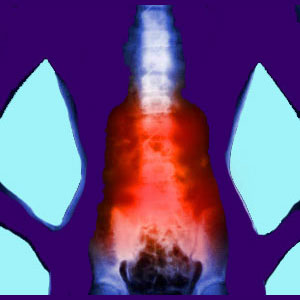
Lower back pain diagnosis describes the process by which the origin of pain is evaluated and verified, prior to treatment. In a perfect world, this process would be comprehensive and sure, neglecting no detail until the truth of the symptomatic source be told. However, diagnosis is a lost art in the modern medical sector, with very few doctors going through the time and trouble to comprehensively diagnose the causation of any type of back pain. Instead, a half-hearted effort is usually made and a verdict rendered based on antiquated or incomplete evidence.
We know that this statement sounds very harsh, but it is virtually the universal truth that we have observed for years and shows no sign of ending any time soon. Incorrect lumbar pain diagnosis is the number one reason why most treatments fail miserably. It is rarely the case that a modern medical therapy option is so ill-conceived and poorly-executed as to grossly fail the recipient. Instead, most treatments fail because they are not being directed at the actual underlying source of pain. If the target of treatment is wrongly identified, then how could a therapy have any hope of enacting a cure?
This discussion centers on the diagnostic process involved in identifying the cause of lower back pain and the many, many problems we witness on a daily basis.
Lower Back Pain Diagnosis Facts
The overwhelming majority of lower back pain syndromes are blamed on some spinal abnormality in the lumbar region. The most common spinal irregularities blamed for originating pain include herniated discs, degenerative disc disease and osteoarthritis in the spine.
What most patients do not know is that these occurrences are virtually universal in the adult population and the most common place to experience them is in the lower lumbar levels. L4, L5 and S1 are the typical anatomical homes for the conditions which are blamed for creating low back pain.
When diagnosed with any of these conditions, most patients are surprised and scared. This is because they do not know a proven fact that these very same structural issues will exist in virtually every adult, regardless of whether they have back pain or not. Most doctors and other diagnosticians fail to mention this simple truth. Of course, sometimes these conditions are the real origin of symptoms. In these cases, the pain should respond well to treatment. However, treatment statistics do not support this logical conclusion, demonstrating clearly that most of these typical structural irregularities are sometimes nothing more than coincidental factors and others times, just part of a larger symptomatic process.
Lower Back Pain Diagnosis Mistakes
Misdiagnosed back pain is a huge problem in the healthcare sector. In fact, mistakenly diagnosed dorsal symptoms have created the literal armies of walking wounded we see clogging the medical systems all around the world. The limits of misdiagnosis certainly do not end with low back pain, but it seems that lumbar issues and incorrect diagnosis often do go hand-in-hand.
Any diagnostician who studies pain will be able to discount many “seemingly verified diagnoses” based on symptoms, locations and other factors that do not correlate. In essence, the theorized cause does not match the clinical presentation of the pain. We see this constantly, but it never ceases to amaze us when clinicians do not recognize these scenarios.
Are care providers really ignorant or callous? Are they overlooking these seemingly obvious details on purpose? What is the explanation for the endless procession of diagnostic blunders that doom patients to dangerous drug therapies, needless injections and barbaric, unwarranted surgeries?
Lower Back Pain Diagnosis Explanations
Of all the patients who write to us each year, a great number eventually turn out to be misdiagnosed. Some realize the medical error in a short time frame, while others wallow in suffering for decades until something gives them the incentive to start again from the beginning of the process: Diagnosis.
We often tell patients that pain which defies treatment and endures or worsens despite the best efforts of doctors, often indicates misdiagnosis. Likewise, pain that moves around and changes illogically in regard to the suspected causation, often points to misdiagnosis.
Doctors know these truths well. However, the mistakes keep racking up due to the never ending business-motivated transformation of the medical sector. Caregivers simply do not have the time or resources to devote to proper diagnostic evaluation, especially for a condition that is as diverse as lumbar pain. Many doctors simply do not care, as long as they are getting paid. Instead, these doctors must find some probable cause (anything will do) and get the patient into the money-making part of the plan: Treatment. Do we fault diagnosticians for this? Yes? No?
Doctors can choose how to practice medicine. They can devote the time and effort into the proper application of medical science or they can choose to study and implement medical business. Most physicians have no choice but to choose the second option. However, this choice is directly responsible for causing endless suffering to millions of back pain sufferers and ten times that number of patients with all manner of other misdiagnosed health issues.
Nobody likes to read essays like this one about incorrect lower back pain diagnosis, and we do not like to write them. However, as a patient advocacy organization, we have no choice but to share the facts, objectively, for as long as these facts remain true. When the face of medicine is horrid and clueless, we have no choice but to publicize it, just the same as if it were beautiful and enlightened. We hope that time will allow us to write fewer of these critiques, but until then, at least you know that you have someone on your side, telling you the absolute truth, instead of “one highly subjective version of the truth based on the potential for profit”.





